The technical progress and as easy as possible for the modern life. Where once was the factory, now for the most part there are shopping centres, cinemas, beauty salons. The process of production of goods and almost completely mechanized and computerized. And the sphere of production and replaced by that of services. The man on the other hand, is located for hours in the office trying to come up with another sure the magazine method of sales, marketing strategy or the other option of making money from other people wallets. And then he put in his car, and comfortably, in a comfortable driver's seat to get back home. Of course, we painted the perfect image sense to refer to the traffic jams, stuffy offices, vehicles and the public, which enjoys a considerable part of the population, etc. But, there are those who want to live comfortably?
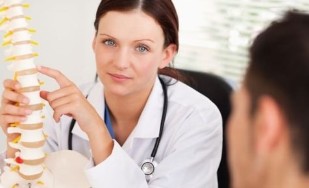
But, what and the use of this kind of comfort? Our century has already been declared as the century of inactivity, which means a lot of unpleasant consequences. Cardiovascular disease, massive obesity, hypertension, sciatica and other diseases, are attached with their own vehicle, a gentle and office chair of the un's private office. But the most common disease that we have to pay for a sedentary lifestyle, and low back pain. It will be he l d this approach of the article.
Osteochondrosis
What and osteochondrosis? Consider the mechanism of development and the type of disease, When we hear about the degenerative disc disease, the first place you think of back pain and muscle. However, the disease directly the muscular system is not affected. Pathological changes occur in the cartilage, which exist in all the joints of our body.
Cartilage tissue has a protective and cushioning of the functions. In addition, it assigns the un's special secret, that lubricates the joint surfaces, reducing friction during the movement of the bones. But in some cases the cartilage door down (degenerates). In addition, metabolic disorders, lack of certain vitamins and minerals, and also metabolic hereditary dysfunctions disturbed the nutrition of the cartilage tissue, it loses its strength and elasticity. S called This condition kwashiorkor.
So, osteochondrosis – scientific-dystrophic changes in the cartilage. Theoretically, pathological may occur from changes in any joint. But in practice, low back pain, often affects our spine. I depending on which part of the spine is localized process, to distinguish between lumbar, cervical, thoracic and osteochondrosis.
Imagine our spine. It consists of separate bones of the vertebrae. Each vertebra has un because I several processes. Between the body and the appendices has un the hole, through which passes the cord of the spinal cord. The vertebrae are arranged in such a way that the holes form un-named hollow tube the spinal canal. The body of the vertebrae are placed one above the other, and between them a layer of the cartilage intervertebral cartilaginous clubs. They function as shock absorbers, to mitigate the impacts and the reduction of the load on the spine when walking or other movements of the person. The vertebrae have the same structure and differ in size. Exception d l With a few vertebrae fused sacrococcygeal division set of elements and of the cervical spine,which differ from each other in The structure.
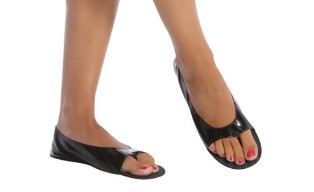
The spine is represented by four departments:
- neck (from 1 to 7 vertebrae);
- breast (8 to 12);
- lumbar (13 to 18°);
- the and the sacral coccyx (this division consists of the bones of the still Units, and, therefore, are not in the process involved pathological).
Consequently, osteochondrosis of the vertebral column is divided into three main types that we outlined above.
Types of osteochondrosis
The most osteochondrosis Marta the neck of the uterus, cervical vertebrae because they have different structures and muscles supporting the spine, this part a little more quickly developed. With time, cervical or any other region of the spine of the un disc hyaline cartilage starts to harden, losing its elasticity, and the vertebrae s approach each other. The result can be un-pinched nerve fibers or blood vessels. As a result of the disorders of the innervation and blood supply of the relevant authorities, which leads to irregularities in their work, the reduction of motor activity, the appearance of the pain syndrome. In addition, when the displacement of the vertebrae, their buds can irritate the muscle tissue in this area, which leads to a muscle spasms. But, against the background of the disease, the muscles of the machine and therefore have to work double to compensate for the reduction of shock-absorption function of the spine and changing the position of the bodies vertebral.
Along with the neck, Marta quite well lumbosacral degenerative disc disease that develops in the background of the high regular load on your back, weight lifting, etc.
Thoracic osteochondrosis and a little bit less than the first two varieties of the disease. In addition, the diagnosis difficult your and of the disease that already has a number of non-specific symptoms similar to the symptoms of angina pectoris. Especially, a remarkable the fact that themselves to the body of the vertebrae, cartilage, piegaro, the brain and the spinal cord is not equipped with pain receptors, and therefore, the pain in osteochondrosis and indirect in nature. Osteochondrosis are also some of the varieties of Osteochondropathy, that a slightly different etiology. We will mention in our article.
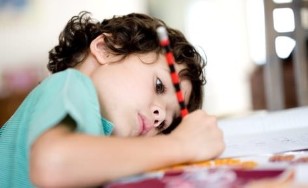
The causes of the disease
With the main causes of development of degenerative disc disease, physical inactivity – we started our history. As they say the movement and the life! What happens with the lack of engine sufficient for the activity may affect the state of our joints and the spine? The thing our, a that the back has un-natural muscular corset that supports the spine and the right help to carry out their functions. However, in the absence of physical effort, muscles weakness the column support lost the charge main falls on the intervertebral cartilaginous discs, and they eventually suffer degenerative changes.
However, excessive exercise, such as professional athletes, can also lead to degeneration and the degeneration of the cartilage, and, therefore, to enable the development of osteochondrosis Osteochondropathy and others. Therefore, in this sense, the need to adhere to the gold, that is to say, in order to avoid examining problems of health.
Important role in the development of degenerative disc disease is un style for real life. In addition to the lack of sufficient physical activity, this can be attributed to an unbalanced diet lack of vitamins and minerals needed in the diet, Smoking, alcohol consumption consumption d', the use in everyday life and in the work place of the wrong furniture, sleep on a soft mattress, habitual poor posture, driving, working conditions, etc.D.
All of this inevitably lead to the door of the malnutrition cartilage, the loss of its quality characteristics (strength, elasticity) and the development of osteoarthritis. Flat feet and quite different from another common cause of lower back pain. It would seem, what relation to the deformation of the arc may have foot pain in the low back and especially the neck? It turns out that the most direct. The human foot is designed in such a way that and able to distribute the weight of the whole body when walking. In the evolution of the bones of the foot are the odds of the arc longitudinal and transversal. Because of this structure, along with the emergence physiological curves of the spine to be possible to human bipedalism. If the arch of the foot, or for another reason and flattened, the whole moves the load to the spine. And this pain in the back, limitation of motion of the range, and even migraines.
In recent years, many scholars, is inclined to the fact that, in many ways to the development of osteoarthritis and is affected by heredity.
The symptoms of degenerative disc disease
Recognized As degenerative disc disease? The symptoms of osteoarthritis are very much destinations. While most of us only know about the main signs are this disease: I difficulties muscle pain in the movement. However, not knowing to speak in detail about the mechanism of development of degenerative disc disease. Original works of art of all the signs of this disease are directly related to processes that occur during the development of the disease.
So, as we already know, the symptoms of degenerative disc disease closely associated with blood vessels and nerve fibres, with the resulting innervation and violation of nutrition of the respective muscles, organs and tissues. Thus, the pathological changes s concern not only the muscular system. Thus, the symptoms of cervical degenerative disc disease frequent headaches, dizziness and even, along with the pain in the neck muscles and the shoulder girdle.
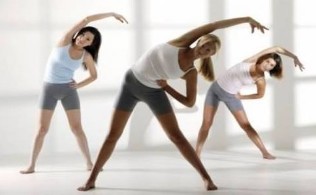
Headache ca has cervical osteochondrosis vascular origin: blood flow in the brain is broken, I cèl * cells nerve experience hypoxia. It is also connected with a sickness sometimes can be unconscious States. An alteration in associat with the blood of the cervical osteochondrosis, in some cases, can also cause loss of a patient in a hearing of the violation of movement coordination (unsteadiness of gait), hoarseness of the voice. Snoring can also indicate the evolution of the arthrosis.
If degenerative changes affect the spinal clubs of the thoracic spines , the degenerative disc disease is manifested with pain in the back of the corresponding localization, adhesion asthmatic component to central pain. Sometimes, the patient may experience shortness of breath and arrythmia. Often patients confuse the appearance of cardialgia ischemic and heart disease (angina pectoris). But this kind of anxieties, there are still a number of distinctive features. Subjectively that may be un perceived as "number" in the chest. The intake of nitrates and other antianginal funds not s relieves the pain. Angina in a human, the object of the extension of anxiety and even a fear of death. Thoracic degenerative disc disease does not have these symptoms. Sometimes for cardialgia caused by osteochondrosis can last a couple of days, but do not threaten human life. Coronary heart pain and intermittent, but ignoring them can lead to the development of myocardial infarction, and untimely medical aid at an attack of angina pectoris may cause death.
Lumbosacral Osteochondrosis of the spine is characterized by pain in the lower back. The pain may radiate to the lower extremities. The patient can also difficulty experienced in walking, which is associated with a decrease in innervated by this segment of the spinal cord and muscles. Pains are The features of nature. Sometimes the patient and difficult to increase the back, getting out of bed or change the position of the body. Reflexes of the lower extremities osteochondrosis lumbosacral small of the.
Osteochondropathy
We have already touched on this article as a problem, as the children of lower back pain. The symptoms and treatment of this disease differ from adults. Due to This, primarily, with the concept of child means different osteochondrosis, Osteochondropathy. The most common are:
- disease Keller,
- disease of Osgood–Schlatter,
- illness the President May,
- disease Legg-calve-Peters.
Keller disease occurs in children of 8 to 12 years, but can also develop in adulthood, which happens much less frequently. When this disease affects the bone spongy at the foot. In addition, there are two main types of this disease. Disease Keller the first type affects the have os. If it occurs the disease for the second type, pathological changes affect the metatarsal bones.
Schlatter disease affects the tibial bone in the area below the kneecap and developed in the age group of 11 to 14 years old. Predisposing factors are: practicing sports (football, basketball, running, jumping, etc.). The appearance of the disease can be the result of the difference between the speed of growth of bones in adolescents, and the development of cartilage.
Disease President May or curvature of the spine, to one of the varieties of thoracic osteochondrosis. This condition develops usually in children and adolescents from 8 to 14 years, but for a long time neither the child nor the parents may not notice any major deviations. The symptom visible from the bad posture of the child.
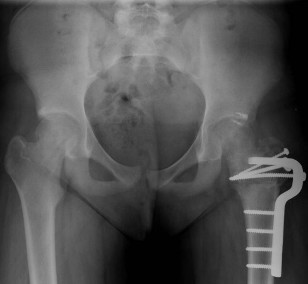
Disease Legg-Calv-Perthes and a disease that affects the thigh bone, or rather its head, in the area of which, and cartilage. The disease most often affects kids 4 to 14 years of age and appear limp. This is In disease produce necrotic changes in the tissues of the femoral head, which are non-infectious (aseptic) character. Most often the cause of the disease to a genetic predisposition. In the early stages, the child begins to limp. Later, the pain has baby in the thigh and knee, especially when driving.
Prevention of osteochondrosis in children and moderate physical activity, wear comfortable shoes, correction and maintenance of correct posture, for which there is the un group of exercises special. Low back pain and pregnancy, of course, if the woman suffers from osteoarthritis, the planning of pregnancy, has to face the treatment of this disease. Although this disease completely heal and impossible, as to restore fully the cartilage can not.
Along with sufficient physical activity, moderation and balance in the Group helps you a normalize your weight and subsequently keep it under control. Normal weight – the key to their well-being and the health of the back. A healthy back and strong and restful sleep I have heard of headaches, d and the prevention of other diseases locomotor system. Love yourself, the more you pay attention and take care of your health!































